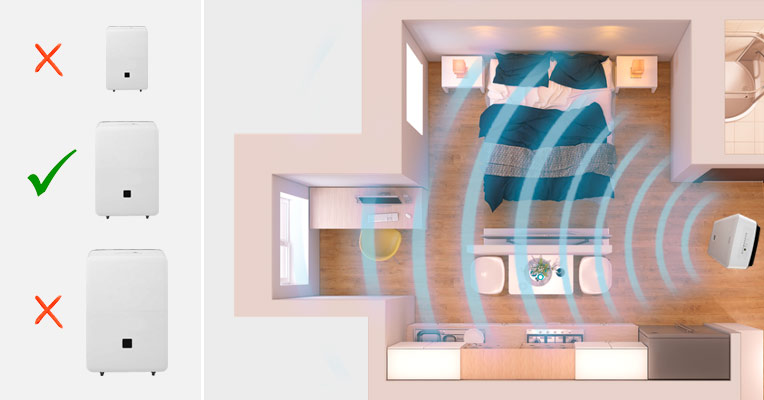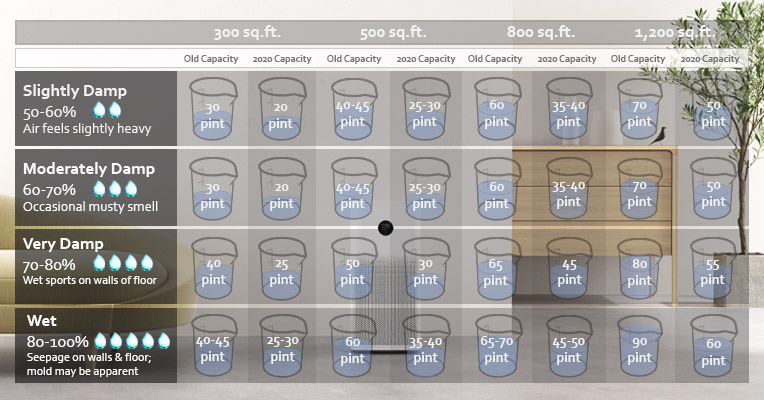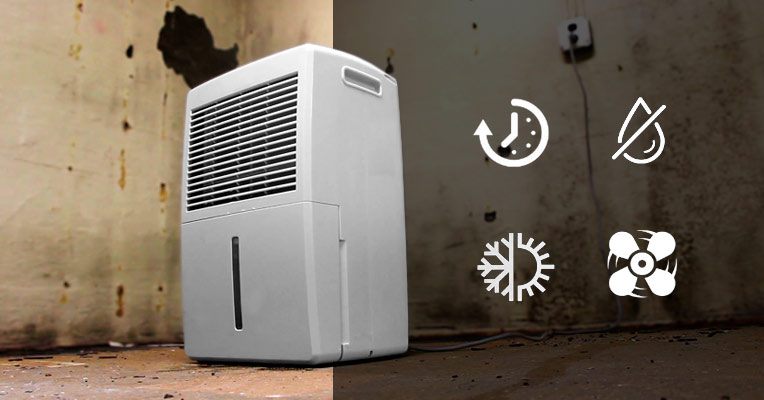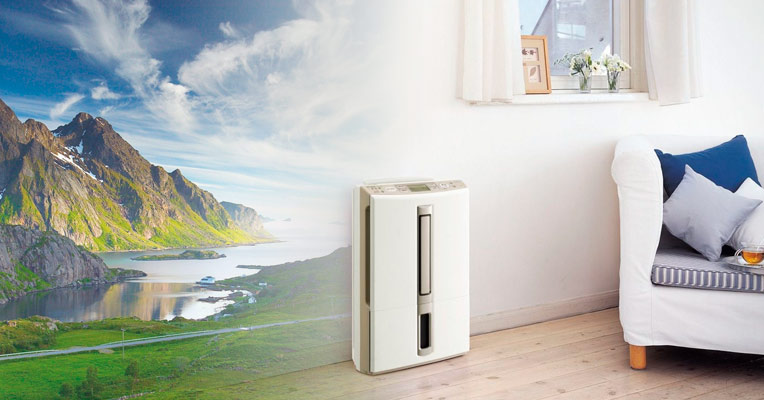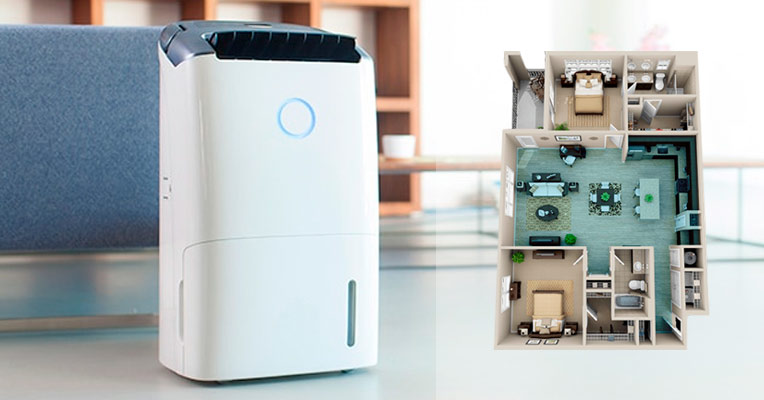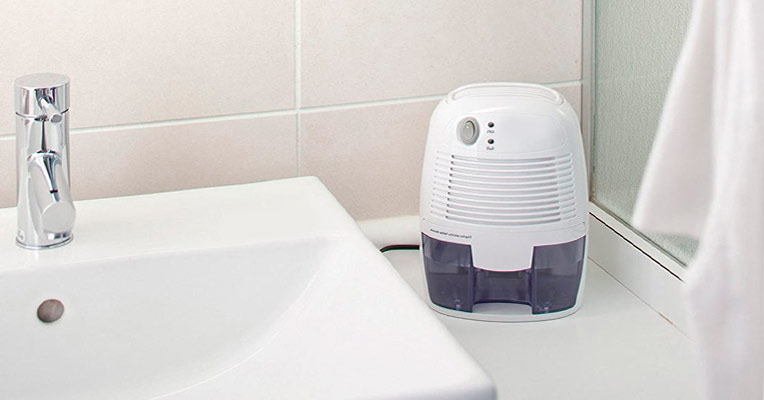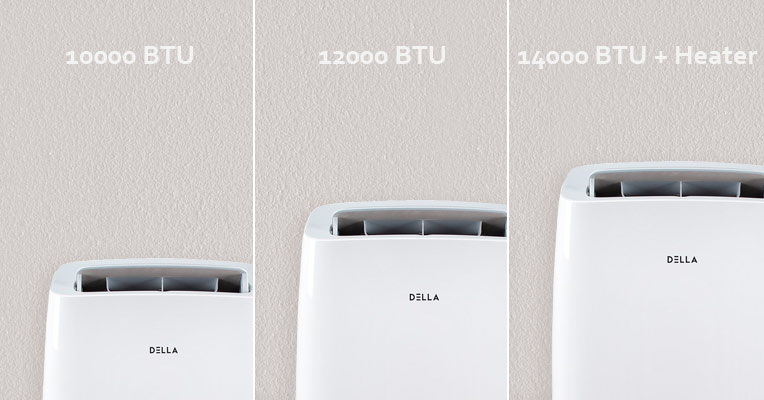To choose a dehumidifier of the right type and size, you’ll need to take into account the size of the area that needs dehumidifying. For that, you may need to measure the width and length of the room and multiply these numbers together. This will give you the required number in square feet (or meters). After that, try figuring out how wet your space is. If you do not have a special humidity meter to find out the precise measurements, look for indicators of dampness. These usually include dark wet spots either on walls or on the edges of doors, musty odors, which usually intensify when the weather’s humid, frequent water beading on windows or condensation inside them or even standing water on the floor if the place is very wet. If you notice any of these signs, you need a dehumidifier. Below you can find a dehumidifying size chart that will help you pick the device best suited for your space.
Dampness and mold in the basement are things common for most homes. Of course, you can try airing it out and see if the problem goes away by itself, but the truth is, more likely than not, once the temperature and humidity levels change, wet spots will be there again. Luckily, a dehumidifier can solve this problem. Not sure which one you need? Here's a brief guide. First, calculate the area’s footage of your basement. If your basement is not larger than 500 square feet, you can go with a dehumidifier that has a 10 pint capacity. Every additional 500 square feet will mean adding another four pints. So, if you have a 1,500-square-foot basement, for instance, you’ll need to look in the direction of models capable of holding 18 pints of moisture. And if your basement is very damp, go for a model that can hold 12 pints for a 500 square-foot space or a more high-capacity one, adding five pints for every 500 square feet. By sticking to this formula, you’ll be able to pick a dehumidifier of the right size. In addition to that, select a dehumidifier of a desiccant type. Unlike refrigerant models, these provide a much more efficient operation in cooler environments where the temperature often falls below 65 degrees Fahrenheit.
When choosing a dehumidifier for a (living) room, one of the first things you need to decide on is whether you want a permanent fixture or a portable model that can be moved from one location to another. With whole-house dehumidifiers, you’re getting a proper HVAC system, including a pipe that drains collected water directly into a sink or to the outdoors. These aren’t cheap and are rather convoluted devices, but many companies provide professional installation, thus, saving you the hassle of setting it up yourself. As far as portable models go, these are, obviously, lightweight and more user-friendly units. As a rule, they have straightforward built-in interfaces that are easy to understand and operate from the wall. Portable models can be fitted either with a hose for draining off straight from the device or a bucket that can be emptied into a sink. Plus, they can be rechargeable, making for an excellent alternative to corded counterparts. To choose the best one for your space, as usual, it is important to know where the problem has to be tackled and measure that area by multiplying its width and length.
Further on, evaluate how serious the dampness problem is. If your living room is only slightly damp, you won’t need to buy the most powerful model. Dehumidifiers holding 10-12 pints will be suitable. In case the level of dampness in the room is higher than average and you can actually see and feel excessive moisture in the room that might reveal itself in the form of wet stains and dark spots on walls or windows, you’ll need a higher-capacity unit, holding 14 - 38 pints of water, depending on the size of the room. Other than that, go for a refrigerant model. Compared to desiccant dehumidifiers, these can absorb much more moisture and ensure more effective operation in hot and humid environments.
Keep note that if your apartment or house is on the higher end of any of these figures, it’ll be best to invest in a dehumidifier with a higher rating than you need. Even though buying a higher-capacity dehumidifier may seem/be more expensive initially, in the end, it will pay off by providing better performance and considerable energy savings.
Other conditions that should be taken into account:
- Your home is located in a humid area;
- There are a lot of windows and doors in the space;
- You have a big family with many people spending time in that space.
Though dehumidifiers come in a variety of models, makes, and sizes, all of them can roughly be divided into three groups depending on where they can be used:
- small dehumidifiers;
- 30-pint and 50-pint dehumidifiers;
- large units with a capacity of 70 pints and more.
When it comes to small dehumidifiers, these usually hold about one pint of water and can fill in around two days. As a rule, they are used in crawl rooms and other spaces where dampness isn't a serious issue. Small dehumidifiers are best suited for RV’s, closets, baby rooms and other small indoor spaces.
30-pint dehumidifiers can be used in areas up to 2,000 square feet, with a humidity level slightly above average. As it’s easy to guess, they can remove up to 30 pints of water from the air per day. This isn’t a lot, but it will be sufficient for homes where the humidity deviates from the norm only a little bit. For damper spaces, though, it’s best to go with more powerful units. If your room is really wet and you can’t get rid of mold growth by simply airing it out, then getting a 50-pint dehumidifier will be a better solution.
For larger areas that are extremely wet, it’s best to select a 70-pint dehumidifier or more powerful units. These usually belong to commercial-grade products and are the most efficient at dealing with mold, mildew, dark stains, musty odors, and even standing water on the floor. If you decide to buy a dehumidifier of this size, make sure it comes with a humidistat. This little add-on will not only save you a bit of money on energy consumption but also provide peace of mind making sure the humidity doesn't change in the room and remains at the optimal level.
Out of all rooms, the bathroom is the most fertile space for the growth of mold, mildew and dust mites, which is understandable since this space is often used for several activities, including using a shower, bathing, running a washing machine and/or a tumble dryer. With all these activities present on a regular basis as well as lack of a good ventilation system, it comes as no surprise that mold, fungi and other allergens tend to settle down here. What is also specific about bathrooms is that there are always water splashes here, meaning choosing a dehumidifier for a bathroom should involve not only considering the power and size (capacity) of the unit, but also its water resistance so that it can work in an efficient manner no matter how wet the space is. One other point worth considering when choosing a dehumidifier for a bathroom or laundry is its noise output. Of course, dehumidifiers aren’t very loud in operation and most of them run at the same noise levels as regular heaters, but they aren’t completely silent either, so checking out the noise level wouldn’t hurt. Finally, when choosing a model for a bathroom, you should consider its tank capacity: units with larger reservoirs will remove more water and help you avoid having to drain them off frequently during the day. Other than that, you get the same considerations to take into account, that is, the size, type and power of a dehumidifier you need.
If you’d ask us, we’d say - a multi-function unit, just like the Della 14000 BTU Portable Air Conditioner and Dehumidifier. What sets this product apart from many of its rivals is that it can function not only as a conditioner but also as a dehumidifier, letting you improve the climate in your home by preventing the growth of mold, mildew, dust mites and other allergens, which settle down in hot and humid environments. Plus, it’s quite powerful, making it a solid choice for rooms up to 500-700 square feet in size, allowing you to use it not only at home, but also in the office, garage, workshop or any other moderately-sized spaces. The biggest advantage of this model is that it doesn’t require any modifications to your windows or walls. Since it’s a portable model, it can be easily drained off using a regular hose. Another benefit is that it uses automatic self-evaporation technology. This means it will operate continuously with no draining needed, as long as you don’t live in too humid areas.
As noted, the device can be used in rather large spaces and can remove up to 111 pints of excessive moisture per day, which along with the continuous drain option allows for long unattended operation. Other than that, the device is streamlined and elegant. Plus, it operates via straightforward digital controls with an LED display that provide quick access to all the settings, so configuring it will be super easy for anyone. And to help you save on energy, the device comes with a handy 24-hour timer, which you can set up to turn on and off automatically depending on when you get or leave home. Last but not least, the device is available in two more capacities, so if this size seems more than you need, you can get a less powerful model.
Summing up, the Della 14000 BTU Portable Air Conditioner and Dehumidifier is a unique product. Coming in a portable design with 4 wheels, it can be moved from room to room for tackling the mold and mildew problem, as well as keeping the indoor climate comfortable all year round.
